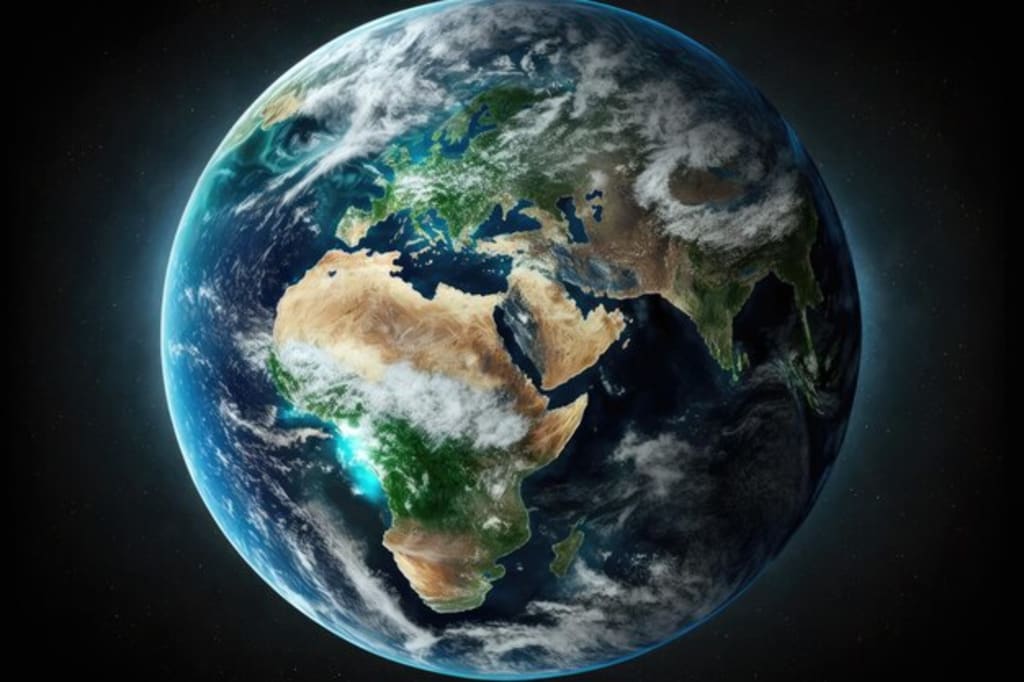There is a invisible shield around Earth humans created my accident
🌍

Let's delve into the intricate layers of our planet, starting with its core. At the very center lies the inner core, a scorching sphere with temperatures soaring about 40 times hotter than a typical household oven. Surrounding it is the mantle, an expansive ocean of molten rock known for its intense heat. Moving closer to the surface, we encounter the Earth's crust, a solid, rocky layer upon which humanity has built civilizations.
Looking skyward, beyond the Earth's surface, we encounter several atmospheric layers, each with distinct characteristics. Among these layers is the ozone layer, crucial for shielding us from harmful radiation. Recently, scientists have unearthed a peculiar protective barrier: a bubble composed of radio waves. Unlike the Earth's magnetic field, which serves a different protective role, this radio wave bubble plays a unique role in safeguarding our planet.
The concept of radio waves can be likened to other forms of waves, such as light or ocean waves. The distance between two consecutive wave peaks determines the wavelength, while the number of these waves per unit time signifies the frequency. For instance, a wave with 10 peaks within one second operates at a frequency of 10 hertz (Hz).
In modern telecommunications, devices like cell phones utilize radio waves with frequencies ranging from 300 to 3,000 megahertz (MHz). These waves, though efficient for communication, face challenges penetrating solid barriers like metal or dense saltwater, leading to signal weakening. To counteract this, engineers use very low-frequency waves, which have longer wavelengths and higher penetrative capabilities, making them ideal for maintaining communication with submarines deep beneath the ocean's surface.
Interestingly, these very low-frequency waves extend far beyond Earth's atmosphere, reaching into space where they interact with solar radiation. Despite our perception of the sun as a benign source of light and warmth, it emits significant amounts of harmful radiation, particularly during solar flares or coronal mass ejections. These charged particles travel vast distances, approximately 93 million miles from the sun to Earth in just eight minutes, eventually colliding with our planet's protective bubble.
This collision results in the accumulation of radiation particles within the Earth's radiation belts, which are trapped by the magnetic field. Recently, scientists have identified a critical role played by the newly discovered bubble of very low-frequency waves just beneath these radiation belts. This bubble aids in deflecting and mitigating some of the harmful emissions, contributing to our planet's overall protection.
Historical studies indicate that human activities, particularly the use of radio waves, have inadvertently contributed to the elevation of these radiation belts. This unexpected consequence underscores the interconnectedness of technological advancement and environmental impact.
While on Earth, our magnetic field offers a crucial shield against radiation, observable in the dazzling displays of the auroras at the poles. These auroras, while visually stunning, serve as a reminder of Earth's role in protecting life from harmful solar rays.
Conversely, outside Earth's protective magnetic field, such as in space, astronauts face significant challenges due to the absence of natural shielding. Future endeavors may involve the creation of artificial protective bubbles using very low-frequency waves around space stations and spacecraft to safeguard astronauts during extended missions.
Beyond our atmosphere, another invisible protector is the atmosphere itself, a layered structure akin to a complex cake or onion. Beginning with the troposphere, where weather phenomena unfold amidst the majority of Earth's air mass, and extending upward through the stratosphere, mesosphere, thermosphere, and finally the exosphere, each layer possesses unique properties crucial to Earth's environment and space exploration.
For instance, the stratosphere houses the ozone layer, pivotal in absorbing harmful ultraviolet radiation. Despite past environmental challenges like ozone depletion from substances like freon, the ozone layer is slowly recovering, highlighting humanity's potential to address and mitigate environmental impacts.
Moving higher into the mesosphere, the coldest layer of the atmosphere where meteors ignite and burn up due to friction, we find a realm largely unexplored by conventional aircraft or balloons due to its thin air density.
Above lies the thermosphere, where temperatures soar due to solar activity, yet the density of air molecules is so low that it feels weightless, facilitating satellite and spacecraft operations, including the International Space Station.
Finally, the exosphere marks the outer boundary where Earth's gravity is overcome by solar radiation pressure, making it the gateway to interplanetary space. This expansive layer illustrates the vastness and complexity of our planet's atmospheric shield, underscoring its importance in supporting life and enabling exploration beyond Earth's confines.
In conclusion, the layers of Earth and its atmosphere form a dynamic system of protection and regulation, essential for sustaining life and advancing exploration in our universe. Each layer, from the molten depths of the core to the outer reaches of the exosphere, contributes uniquely to our understanding and appreciation of our planet's place in the cosmos.
About the Creator
Enjoyed the story? Support the Creator.
Subscribe for free to receive all their stories in your feed. You could also pledge your support or give them a one-off tip, letting them know you appreciate their work.





Comments
Test is not accepting comments at the moment
Want to show your support? Send them a one-off tip.